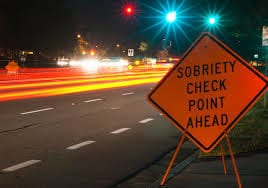
In one form or another, sobriety checkpoints have been around since the 1990s. McLeod County jurors once embraced such heavy-handed police tactics. They figured that if drivers were not breaking the law, they had no right to complain about DUI roadblocks.
But things are different now. Public confidence in police officers recently hit a 22-year low. That’s very important in this context. Jurors are no longer willing to overlook minor checkpoint violations. Instead, many jurors look for any reason possible to invalidate such checkpoints.
Even if a sobriety checkpoint meets all the requirements listed below, and that’s a big “if,” Hutchinson, MN lawyers still have defense options. For example, the complex nature of checkpoint requirements gives attorneys a chance to use the tried-and-true “sink and ink” defense. Generally, jurors must evaluate all aspects of every checkpoint, as outlined below. There is so much evidence on so many different points that confused jurors simply give up.
Respect for Individual Rights
DUI checkpoints override portions of the Fourth Amendment. Officers do not need reasonable suspicion of criminal activity to detain motorists. But many officers take things too far.
For example, officers might use their flashlights to peer into the back seat. That could be a violation of the probable cause rule, which is a different part of the Fourth Amendment than the reasonable suspicion rule. Or, officers could require motorists to roll down their windows or answer questions, like “where are you coming from” or “where are you going.” These activities are clear Fifth Amendment violations. People generally have the right to remain silent.
Failure to respect individual rights definitely affects officers’ credibility. That breakdown makes a lawful checkpoint look like a police dragnet. Additionally, if the failure to respect rights affected the arrest, that arrest might be invalid as a matter of law.
Supervisor-Level Decision
The definition of a “supervisor” is a bit vague. A police chief is definitely a supervisor and a desk sergeant is definitely not a supervisor. Everyone else is somewhere in the middle. Since police chiefs very rarely make checkpoint decisions, a Hutchinson, MN lawyer has some room to work.
Police chiefs might make policy decisions about checkpoints, but they hardly ever make operational decisions, such as the checkpoint’s location and hours of operation. Frequently, the chief makes high-level decisions and a subordinate takes care of the details. That arrangement is arguably illegal.
Additionally, in most cases, checkpoint officers can have absolutely no discretion on any operational point. They can only execute orders from higher up.
Pre-Checkpoint Publicity
To comply with Michigan Dept. of State Police v. Sitz and other cases, police departments must publish checkpoint locations in advance. This publicity gives motorists the chance to avoid the area altogether.
In ye olden days, a notice on the department’s social media account usually satisfied most jurors. But Hutchinson, MN lawyers can now argue that such lip service compliance is insufficient. Today’s jurors want to see more of an effort to publicize the checkpoint. That may not mean a full-page ad in the paper, but there must be more than a single Twitter blurb.
Neutral Formula
This area is the one major exception to the no-discretion rule. And officer discretion in this area is limited. Commonly, officers stop every second or third vehicle and allow the others to pass through. This formula keeps traffic moving. If traffic backs up and the delay becomes too long (more on that below), officers can change the formula and allow more vehicles to pass through uninspected.
In any situation, officers cannot wave through some vehicles and pull over motorists who don’t “look right.” In other words, the checkpoint cannot be truly random.
Brief Detention
Much like the aforementioned supervisor-level decision, this requirement is a bit vague. The law is quite clear that the detention period cannot be unreasonably long, but there is no precise definition of “unreasonable.”
Generally, if the detention period is longer than about twenty seconds, it is unreasonably long. This period includes both the time spent waiting in line and the time spent at the checkpoint itself.
Hutchinson, MN Lawyers and Physical Aspects of a DUI Checkpoint
Once upon a time, jurors were not too concerned with signage, lighting, traffic control, and other physical aspects of a DUI checkpoint. Anything was good enough. Now, jurors want to see clear signage, a well-lit area, and cones or other traffic control devices. Otherwise, they view the checkpoint as a souped-up speed trap, and that’s illegal.
There’s more. The traffic cones must start far away from the actual checkpoint, so motorists have the chance to turn around before traffic backs up. If motorists choose this option, police chase cars cannot pull them over, unless the officer has reasonable suspicion of criminal activity.
There’s still more. The signs must not just say “DUI Checkpoint Ahead” or something like that. They must also include instructions, like “Have Drivers’ License Ready.”
Contact a Dedicated Attorney
DUI checkpoints that do not meet legal requirements are invalid. For a free consultation with an experienced Hutchinson, MN lawyer, contact Carlson & Jones, P.A. Convenient payment plans are available.

